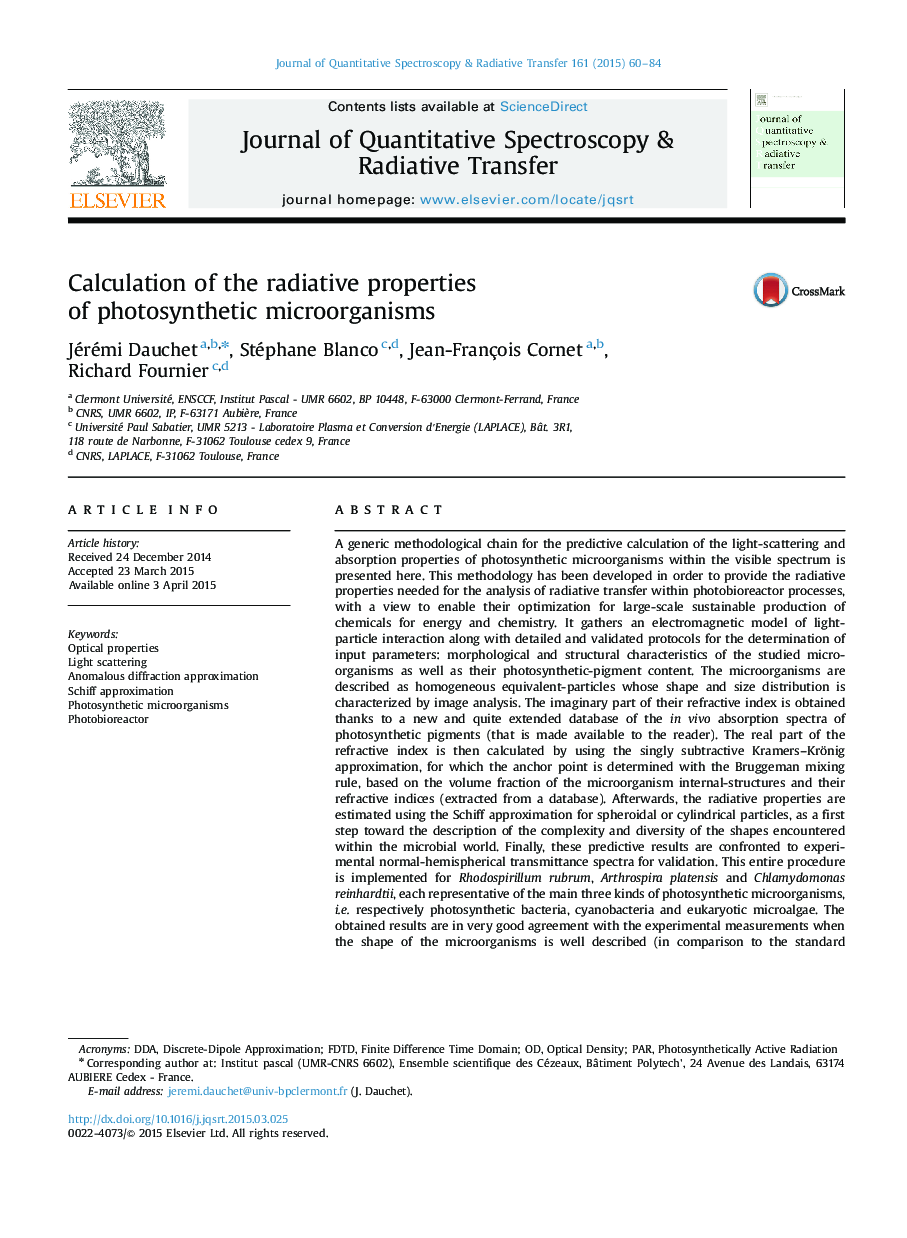| Article ID | Journal | Published Year | Pages | File Type |
|---|---|---|---|---|
| 5427885 | Journal of Quantitative Spectroscopy and Radiative Transfer | 2015 | 25 Pages |
A generic methodological chain for the predictive calculation of the light-scattering and absorption properties of photosynthetic microorganisms within the visible spectrum is presented here. This methodology has been developed in order to provide the radiative properties needed for the analysis of radiative transfer within photobioreactor processes, with a view to enable their optimization for large-scale sustainable production of chemicals for energy and chemistry. It gathers an electromagnetic model of light-particle interaction along with detailed and validated protocols for the determination of input parameters: morphological and structural characteristics of the studied microorganisms as well as their photosynthetic-pigment content. The microorganisms are described as homogeneous equivalent-particles whose shape and size distribution is characterized by image analysis. The imaginary part of their refractive index is obtained thanks to a new and quite extended database of the in vivo absorption spectra of photosynthetic pigments (that is made available to the reader). The real part of the refractive index is then calculated by using the singly subtractive Kramers-Krönig approximation, for which the anchor point is determined with the Bruggeman mixing rule, based on the volume fraction of the microorganism internal-structures and their refractive indices (extracted from a database). Afterwards, the radiative properties are estimated using the Schiff approximation for spheroidal or cylindrical particles, as a first step toward the description of the complexity and diversity of the shapes encountered within the microbial world. Finally, these predictive results are confronted to experimental normal-hemispherical transmittance spectra for validation. This entire procedure is implemented for Rhodospirillum rubrum, Arthrospira platensis and Chlamydomonas reinhardtii, each representative of the main three kinds of photosynthetic microorganisms, i.e. respectively photosynthetic bacteria, cyanobacteria and eukaryotic microalgae. The obtained results are in very good agreement with the experimental measurements when the shape of the microorganisms is well described (in comparison to the standard volume-equivalent sphere approximation). As a main perspective, the consideration of the helical shape of Arthrospira platensis appears to be a key to an accurate estimation of its radiative properties. On the whole, the presented methodological chain also appears of great interest for other scientific communities such as atmospheric science, oceanography, astrophysics and engineering.
